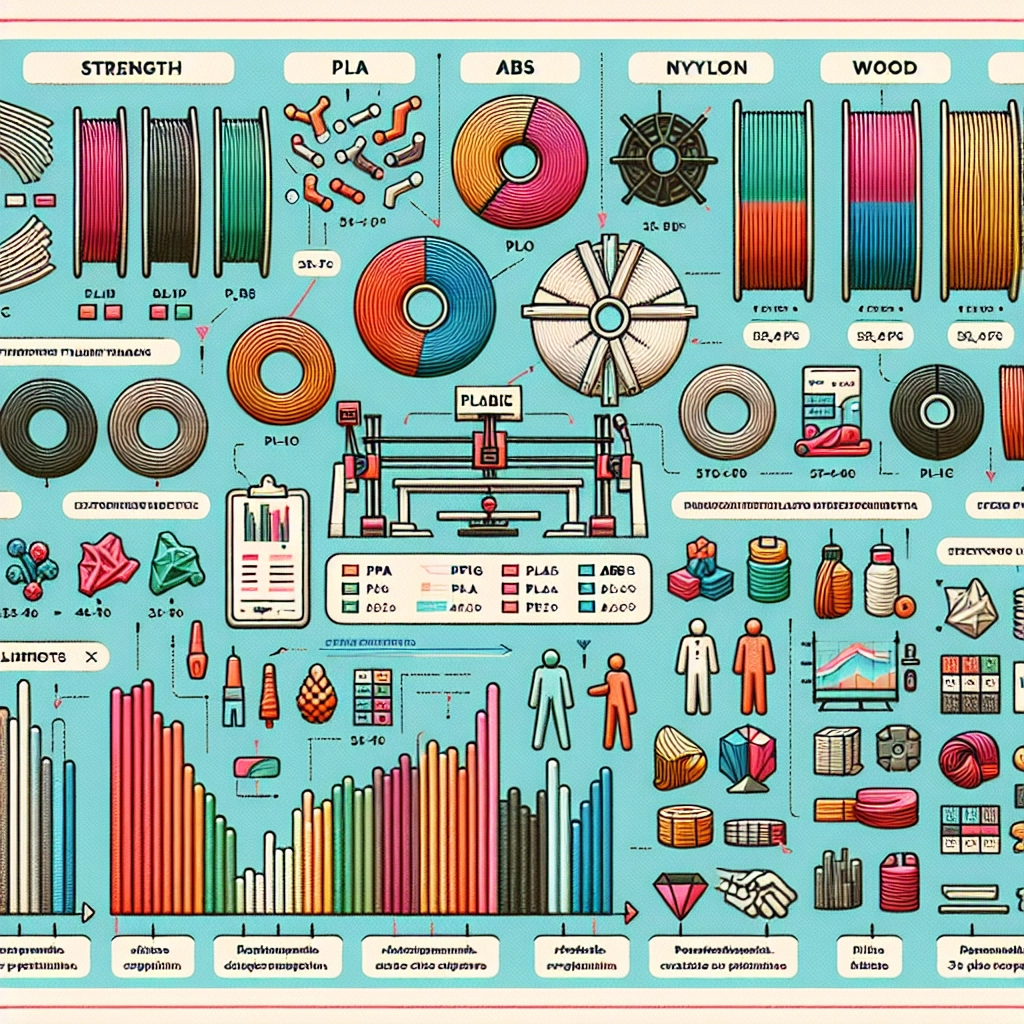The Ultimate Guide to Choosing the Right 3D Filaments for Your Projects
3D printing has revolutionized the way we create objects, prototypes, and even art. However, the quality of your printed item heavily depends on the type of filament you use. With so many options on the market, it can be daunting to choose the right material for your project. In this ultimate guide, we will explore the different types of 3D filaments available, their characteristics, and how to select the best one for your specific needs.
Understanding the Basics of 3D Filaments
Before diving into specific filament types, it’s essential to understand what 3D filaments are. Simply put, filaments are the thermoplastic strands that you feed into your 3D printer to create an object layer by layer. They come in various materials, each with unique properties, advantages, and disadvantages.
Common Filament Types
-
PLA (Polylactic Acid)
- Characteristics: Biodegradable, easy to print, and available in a wide variety of colors.
- Pros: Low printing temperature (around 190-220 °C), great adhesion to the print bed, and minimal warping.
- Cons: Lower heat resistance and brittleness can be an issue in functional applications.
- Best Use: Ideal for beginners, as well as for prototypes, toys, and non-functional aesthetic prints.
-
ABS (Acrylonitrile Butadiene Styrene)
- Characteristics: Strong, durable, and resistant to heat.
- Pros: Better mechanical properties than PLA, allowing for functional parts and a smoother surface finish after post-processing.
- Cons: Requires higher printing temperatures (around 220-250 °C) and may emit fumes that should be adequately ventilated. Prone to warping without proper bed adhesion.
- Best Use: Suitable for functional parts, automotive components, and applications requiring durability.
-
PETG (Polyethylene Terephthalate Glycol-Modified)
- Characteristics: A blend of ease of use, strength, and chemical resistance.
- Pros: Combines properties of PLA and ABS, low warping, good layer adhesion, and available in transparent options.
- Cons: Can string during printing and may require fine-tuning of printer settings.
- Best Use: Ideal for everyday objects, containers, and projects needing durability.
-
TPU (Thermoplastic Polyurethane)
- Characteristics: Flexible and rubber-like, making it ideal for applications requiring elasticity.
- Pros: Resilient, excellent shock absorption, and great adhesion to other materials.
- Cons: Requires slower print speeds and can be challenging to print due to its flexibility.
- Best Use: Perfect for phone cases, toys, gaskets, and flexible components.
-
Nylon
- Characteristics: Strong, durable, and flexible.
- Pros: Excellent tensile strength and wear resistance.
- Cons: Absorbs moisture easily, requires higher print temperatures, and might warp without proper settings.
- Best Use: Great for functional parts, mechanical parts, and items that need to withstand stress.
Key Considerations When Choosing Filaments
1. Project Requirements
- What are you printing? Identify whether strength, flexibility, or aesthetic qualities matter more for your project.
2. Printer Compatibility
- Make sure your 3D printer can handle the filament you plan to use. Check compatible temperature and extrusion settings.
3. Post-Processing Needs
- Consider how much post-processing you’re willing to do. Some materials, like ABS, can require additional steps for smoothing and finishing.
4. Cost
- Filaments come in various price ranges. High-quality materials often yield better results, but budget constraints may limit your options.
5. Ease of Use
- If you’re a beginner, it’s advisable to start with user-friendly options like PLA before progressing to more complex materials.
Conclusion: Making the Right Choice
Choosing the right filament for your 3D printing project is crucial for ensuring a successful outcome. By understanding the characteristics of different filaments and considering your specific needs, you can make informed decisions that lead to stunning prints. Always experiment with smaller test prints before embarking on larger projects, allowing you to get a feel for how each material behaves.
With this guide, you’re now equipped with the knowledge needed to navigate the world of 3D filaments confidently. Whether you’re designing prototypes, fun gadgets, or artistic pieces, selecting the right filament can make all the difference in quality and functionality. Happy printing!

